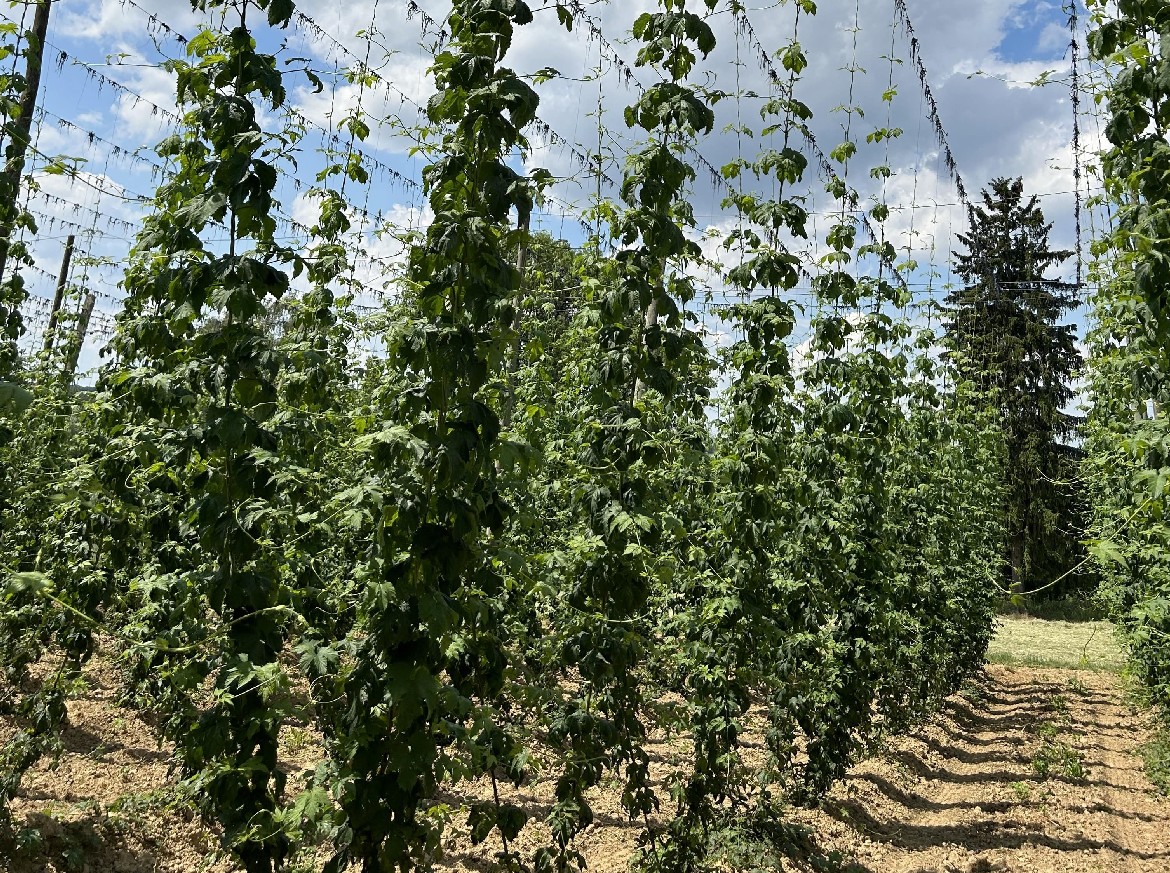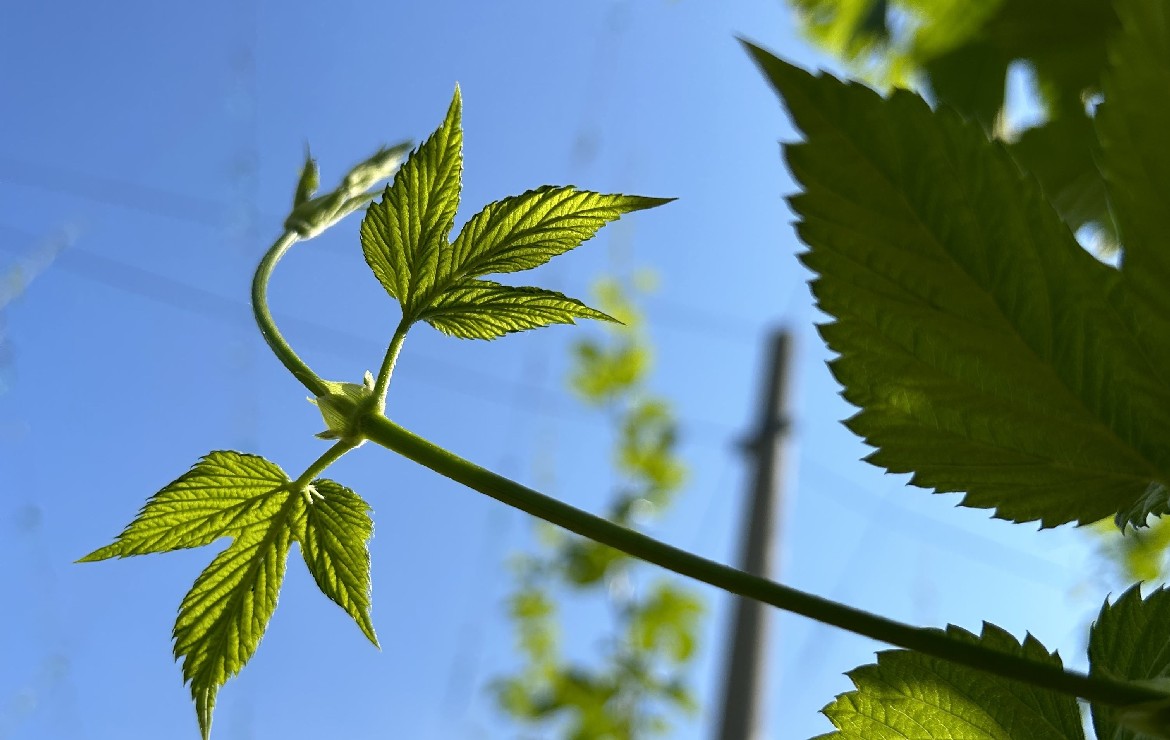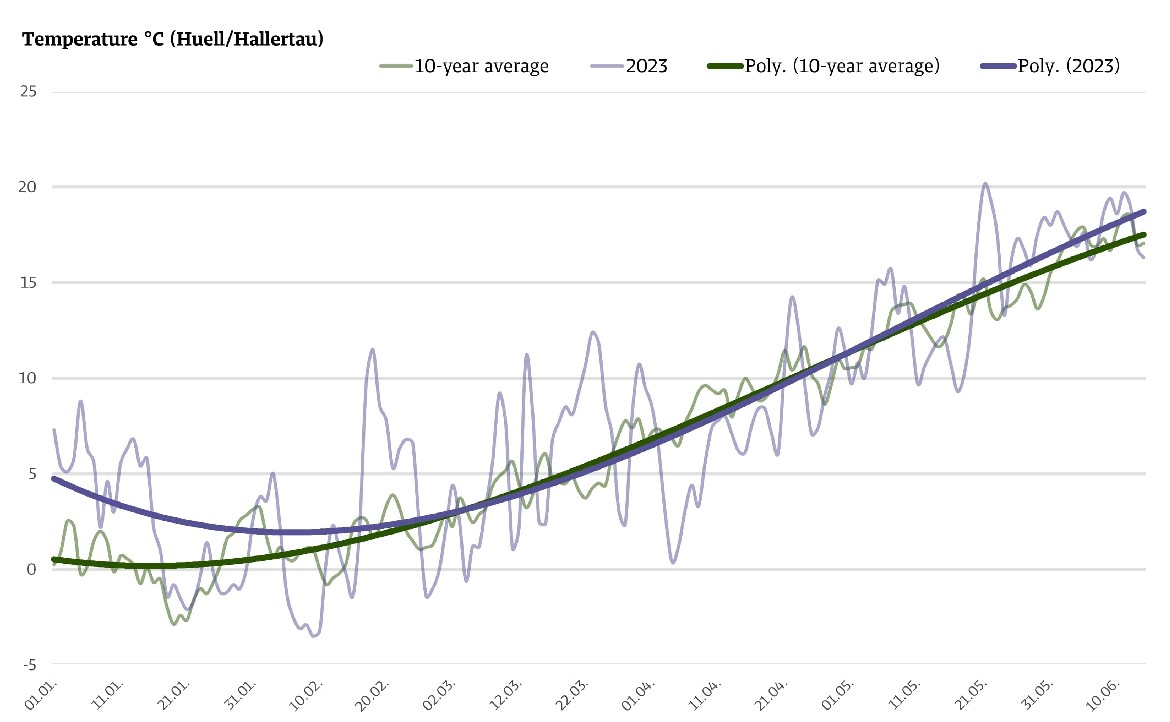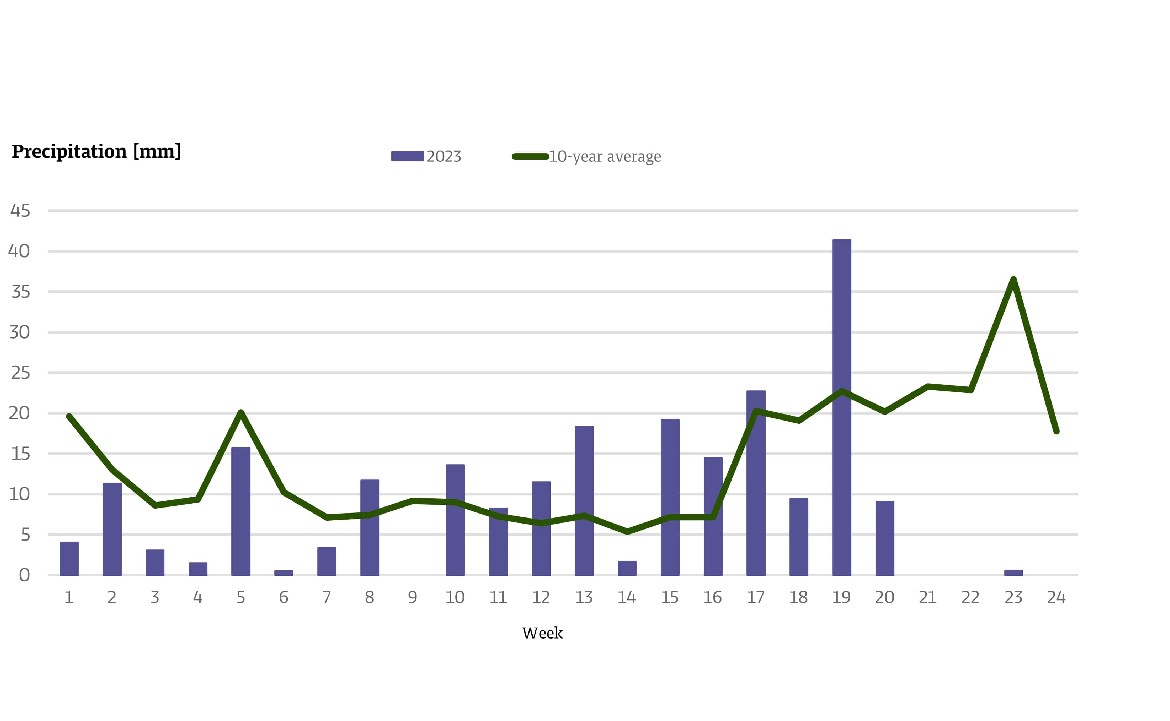Hello and welcome to the 2023 BarthHaas HopUpdates!
Hop Acreage Germany
Variety | Total acreage 2023 in ha | Difference to 2022 in ha |
Herkules | 7.497,56 | + 355,75 |
Perle | 3.235,49 | - 118,87 |
Hallertauer Tradition | 2.702,13 | - 84,01 |
|
|
|
Germany in total | 20.628,82 | + 24,22 |
Source: Verband Deutscher Hopfenpflanzer e.V.
You can obtain a detailed overview from the Association of German Hop Growers.
There is a minimal net increase in area of 24 ha (+ 0.1 %), but further significant shifts between varieties, continuing the trend of previous years.
Reflecting the increasing demand for high alpha varieties, Herkules increases by a further 355 ha (+ 5.0 %), Polaris by 67 ha (+13.6 %) and Titan by 92.6 ha. On the other hand, the aroma varieties are being further reduced. The largest absolute decrease is recorded for the Perle variety with -119 ha (-3.6 %), followed by Hallertauer Tradition with -82 ha (-3.0 %). The Flavour varieties are also continuing to decline: Amarillo, Hallertau Blanc, Hüll Melon, Mandarina Bavaria and Ariana are all losing double-digit hectares. The varieties Magnum (-41 hectares), Hallertauer Mittelfrüher (-20 hectares), Taurus (-13 hectares), Hersbrucker Spät (-25 hectares) and Northern Brewer (-37 hectares / -16.3 %!) are also being cut back because they are not well adapted to the changing climate and lead to insufficient returns to the grower.
Aroma hops are being replaced primarily by high alpha, but younger cultivars better adapted to climate change, such as Tango (+ 30 ha), are also showing growth.
The number of active farms continues to decline, as in previous years, and now stands at 1,041 (-12). The area is mostly leased from surrounding farms and remains in production.
Weather conditions and Plant Development Germany

A precipitation-rich autumn ended the extreme drought in summer 2022 and was able to moisten the soils again, at least in the upper area. Apart from a brief cold spell in mid-December, the winter of 2022/2023 was extremely mild in parts. In addition, precipitation in January and February was well below the long-term average.
At the beginning of March, dry weather ensured that the soils were easy to drive over, and good conditions prevailed at the start of spring work. Subsequently, an unstable weather phase set in, so that the spring work had to be interrupted again and again. In addition, cool temperatures slowed down the growth of the hop plants. Consequently, hop initiation was also delayed and many farms did not start until around May 6, a good week later than usual. Almost daily rainfall made it difficult to guide the young hop shoots and repeatedly interrupted work. Subsequent tillage operations were also delayed due to wet soil conditions.

At the end of May/beginning of June, the weather situation changed and dry, warm weather led to favorable development conditions. As a result, the development backlog was largely made up and was only a few days behind the long-term average at the end of the reporting period. The hop stands currently have a BBCH stage of 37 to 38, meaning that the hop plants have reached about 70 to 80% of the trellis height.
Favored by the wet and cold weather, susceptible varieties such as Polaris, Herkules and Hersbrucker Spät show increased downy mildew infestation, whereas pest infestation is still relatively low. Due to the dry weather, a reduced uptake of trace elements (especially zinc and boron) can be observed.


Other European growing areas
Further official acreage figures are available so far from the Czech Republic and Slovenia.
In the Czech growing regions, acreage was reduced by a further 69 ha (-1.4%) to a total of 4,874 ha. Saazer, the world's most widely planted fine aroma variety, which suffered extremely from heat and drought last year, was reduced by 73 ha (-1.8%), followed by Premiant (-16 ha, -7.5%). The more climate-stable variety Sladek (+11 ha, 2.8%) continues to increase in area and is a viable variety for the growing region.
Czech Republic
Variety | Total acreage 2023 in ha | Difference to 2022 in ha |
Saaz | 4.063,0 | - 73 |
Sladek | 407,9 | + 11 |
|
|
|
Czech Republic in total | 4.873,6 | - 69 |
Source: ÚKZÚZ – Central Institute for Supervising and Testing in Agriculture
Plant Development Czech Republic
From the beginning of the vegetation the stage of development is about a week behind most varieties. The reason for this was cold and rainy weather in April. Apart from Tirschitz (90 mm), there was almost no precipitation in May on the Czech hop fields in Saaz and Auscha. As a result, the level of development continues to lag several days behind in June. As everywhere in Europe, the earth flea can be found sporadically and the influx of winged aphis and thus the infestation with aphids has begun. Diseases none to be found.
Slovenia
Variety | Total acreage 2023 in ha | Difference to 2022 in ha |
Aurora | 740,3 | + 20 |
Celeia | 466,6 | + 22 |
|
|
|
Slovenia in total | 1.660,1 | + 34 |
Quelle: IHPS – Slovenian Institute of Hop Research and Brewing
In Slovenia, the area under cultivation increased again slightly by 34 ha (+2.1%) to a total of 1,660 ha. The varieties with the largest area are Aurora (+20 ha, +2.8%) and Styrian Golding Celeia (+22 ha, +4.9%).
Plant development Slovenia:
January-March were 3°C warmer than average. Rain fell sufficiently with 250mm. However, precipitation came almost exclusively in January, so the following months were too dry. Plant development was somewhat behind at the end of April. No diseases and only some earth flea infestation. In May, in addition to sufficient rain (150 mm), there have been 2 minor thunderstorms with hail events, which have damaged about 130 ha of hop area from 30-80%. Plant development is uneven and up to 7 days behind the long-term average. Primary infection is largely controlled, secondary infection can be found everywhere, but below the control threshold.
USA
Variety | Total acreage 2023 in ha | Difference to 2022 in ha |
Aroma | 15.902 | - 3.629 |
High alpha | 6.242 | + 1.578 |
|
|
|
USA in total | 22.709 | - 2.049 |
Source: United States Department of Agriculture
The USA recorded a strong reduction in the aroma varieties Citra, Mosaic and Cascade due to oversupply in "flavor" hops. On the other hand, there was an expansion in the high alpha varieties CTZ and HBC 682. Overall, hop acreage in the USA was reduced by 2,049 ha to 22,709 ha.
Total acreage falls to 60,954 ha worldwide.

